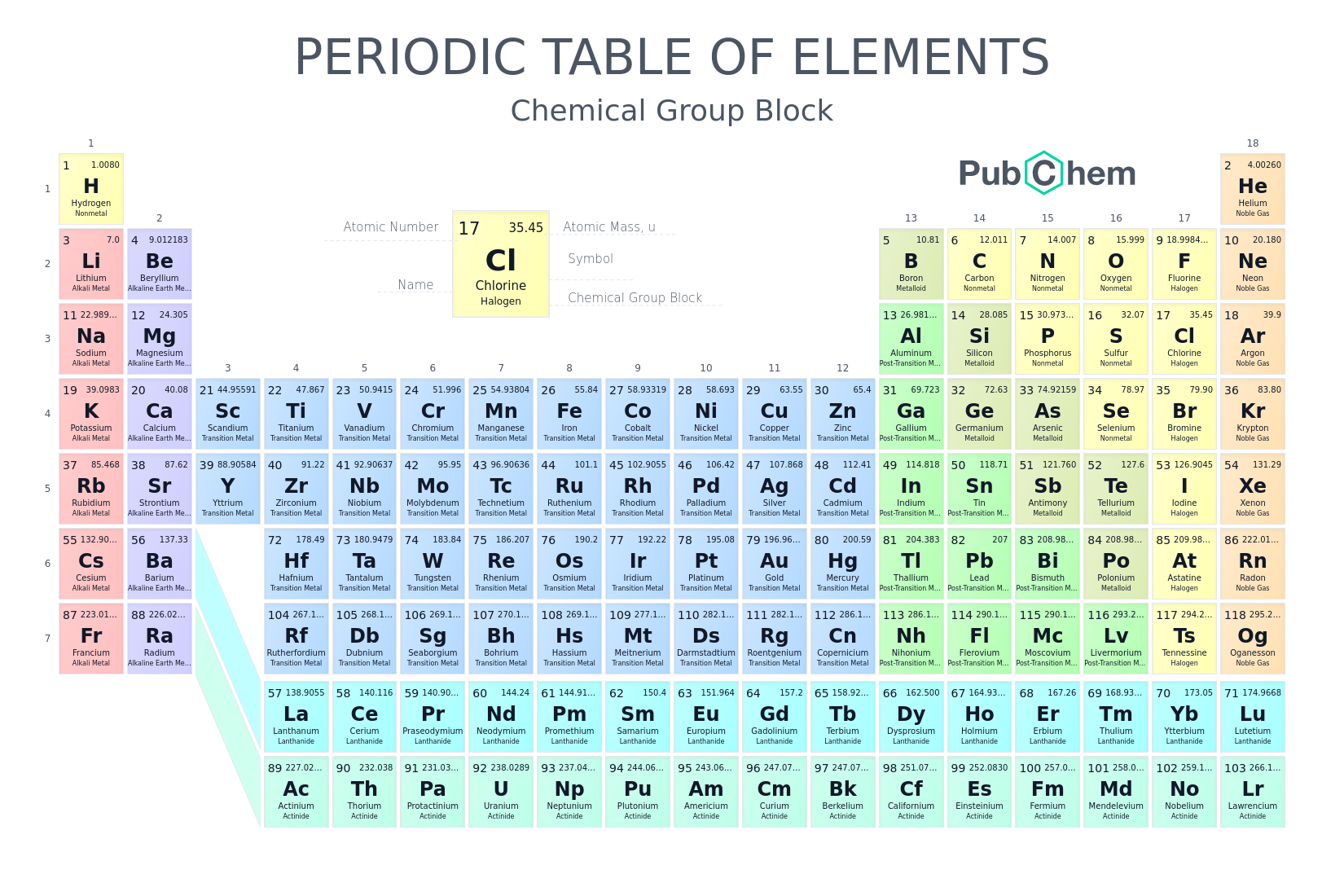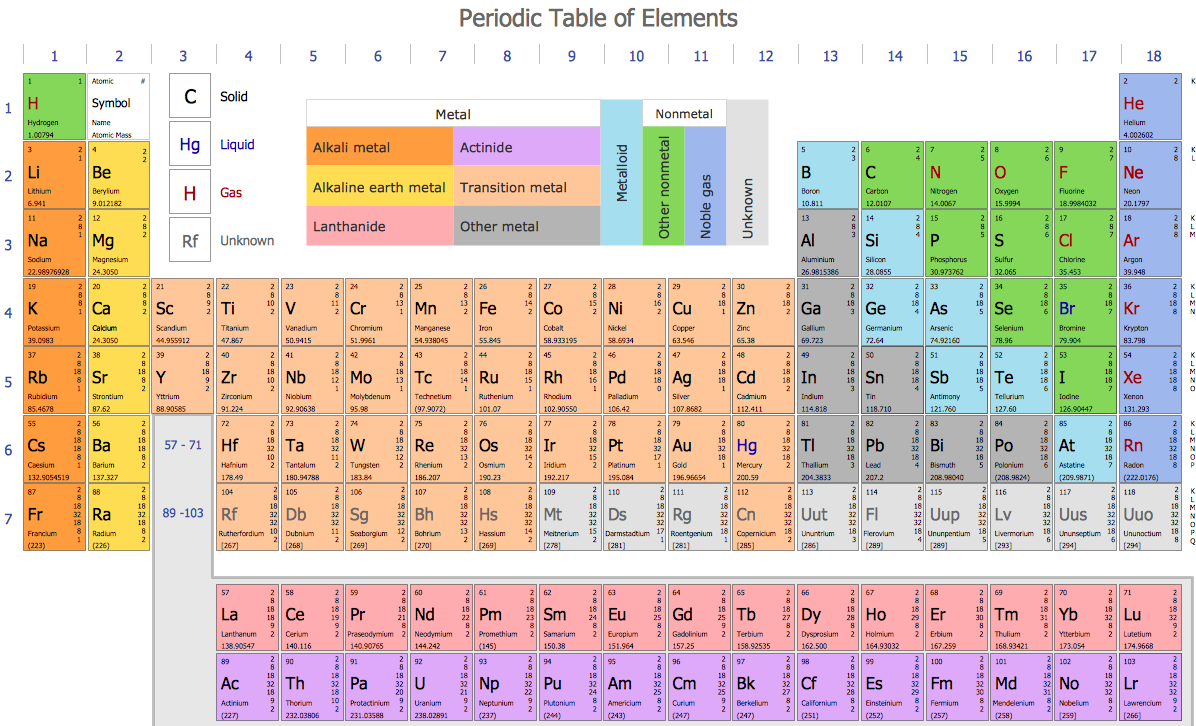
Neither Mendeleev’s first attempt at the periodic system nor his most popular table from 1870 look much like the periodic table that hangs today on the wall of most chemistry classrooms or appears inside the cover of most chemistry textbooks. Perhaps most important, he continued to draw revised versions of the periodic table throughout his life. Petersburg University (the only available chemistry textbooks in Russian were translations) when he developed his periodic law. He was writing a textbook for his students at St. Mendeleev and many of the others who developed systems to organize the elements did so in their roles as chemical educators rather than as chemical researchers. It took time for the periodic table of elements to develop into its current form, and many of its early iterations – such as this one, called “ Mendeleev’s Flower” – would be unrecognizable today. The periodic table-the visual representation of the periodic law-is recognized as one of the great achievements of chemistry and as a uniting scientific concept, relevant to the physical and life sciences alike.īut the periodic table is also an important aspect of science education. In fact, understanding how electrons fill the shells orbiting a nucleus explained some of the anomalies that had plagued the periodic system from the start. Rather miraculously, organizing the elements by their atomic number rather than their atomic weight did not change the arrangement of the periodic table. Rather than atomic weight, atomic number-the number of protons in the nucleus of an atom-determined the characteristics of an element. The 1896 discovery of radioactivity created significant problems for the periodic system. How could radioactive elements, which decayed into other substances, be considered elements? And if they were, how could so many fit into the very few gaps left in the table?Ĭhemists and physicists working together began to understand the structure of the atom and were soon able to explain how the periodic system worked on an atomic level. Chemists had always considered elements to be substances that could not break down into smaller parts. The discovery of radioactivity in 1896 seemed poised to destroy the periodic system. The noble gases had unusual characteristics-they were largely inert and resistant to combining with other substances-but the entire set fit easily into the system. After uncovering the first two, argon and helium, he quickly discovered three more elements after using the periodic system to predict their atomic weights.

In the 1890s, William Ramsay discovered an entirely new and unpredicted set of elements, the noble gases. Sir William Ramsay, who, in the 1890s, discovered the existence of the noble gases, a previously unpredicted set of elements. The discovery of new elements in the 1870s that fulfilled several of his predictions brought increased interest to the periodic system and it became not only an object of study but a tool for research. In these places he not only predicted there were as-yet-undiscovered elements, but he predicted their atomic weights and their characteristics. One of the unique aspects of Mendeleev’s table was the gaps he left. Mendeleev’s system was not perfect but it had the hallmarks of a scientific law, one that would hold true through new discoveries and against all challenges. Through much of the nineteenth century, chemists had worked to find an organizing principle that encompassed all of the known elements and that could be considered a law of nature. Mendeleev was far from the first chemist to attempt to organize the elements by atomic weight or to recognize that characteristics recurred on some sort of regular basis.

Russian chemist and educator Dmitrii Mendeleev is best known today for his creation of the periodic table of elements. This was the first iteration of the periodic law.

#Periodic table chemistry sudafedrine full#
In March 1869, Mendeleev delivered a full paper to the Russian Chemical Society spelling out the most significant aspect of his system, that characteristics of the elements recur at a periodic interval as a function of their atomic weight. This struggle would culminate in a remarkable discovery, a system that classified all of the chemical elements.
#Periodic table chemistry sudafedrine how to#
He had delivered the first volume of his inorganic chemistry textbook to his publisher but was struggling with how to organize the second volume. The elements with properties intermediate between those of metals and nonmetals are called metalloids (or semi-metals).The United Nations declared 2019 to be the International Year of the Periodic Table, celebrating the 150th anniversary of the discovery of the periodic law.Įarly in 1869, Russian chemist Dmitri Mendeleev was in a predicament many people are familiar with-he was facing a deadline. \), metals occupy the left three-fourths of the periodic table, while nonmetals (except for hydrogen) are clustered in the upper right-hand corner of the periodic table.


 0 kommentar(er)
0 kommentar(er)
